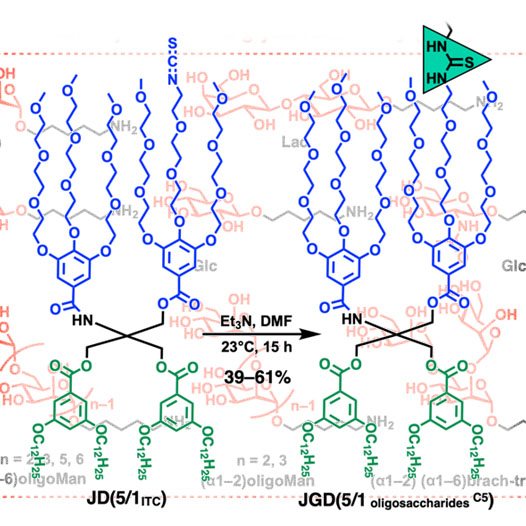 posted: 05/20/2020
posted: 05/20/2020
A study from MERSEC Seed lead by Percec laboratory recently published in PNAS, reported a methodology to create cell-like nanovesicles coated with linear and branched oligomannose, which is widely presented on the surface of bacterias and viruses including coronavirus. Both linear and branched oligosaccharides synthesized by automated glycan assembly (AGA), with hydrophobic N-pentyl linkers, have been used to create Janus glycodendrimers via a new isothiocyanate–amine coupling reaction. These nanovesicles exhibiting lamellar surface morphologies, which mimic the recognition structures of cell-surface glycans (sugars) and viral glycoproteins. This methodology is likely to be useful in helping elucidate mechanisms of significance for translational medicine such as the camouflage functionality employed by viruses to evade recognition. This collaborative work was carried out by the labs of Percec from Penn Chemistry, Seeberger from Max Planck Institute of Colloids and Interfaces, Golm, Germany, Klein from Temple University, and Moeller from RWTH Aachen University.
news release
